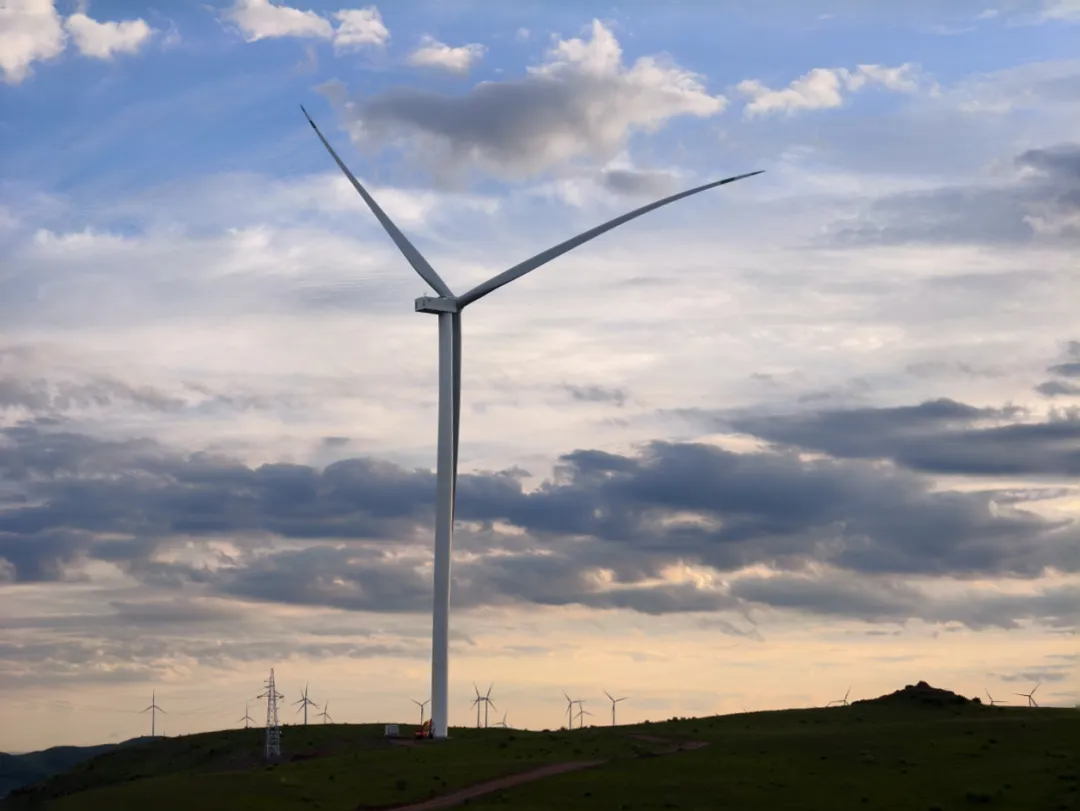新闻聚焦
- 2025-07-31
- 来源: 金风科技
On July 15, according to CCTV News report, China's first data center green power direct-supply "source-grid-load-storage" integration project, the Centrin Data Ulanqab Data Center Low-Carbon Computing Base "Source-Grid-Load-Storage" Integration Project, was officially commissioned. Goldwind provided 26 GWH221-7.7MW onshore wind turbines for the project, with a total installed capacity of 200.2MW. The project integrates wind and solar power generation, smart transmission, grid-direct supply, and storage-based peak shaving, creating a computing-power collaborative park that balances cost efficiency, controllable latency, and security. It dynamically matches energy supply with computing demand, supporting the implementation of China's "East-to-West Computing Resource Transfer Project" and driving the development of "green computing power".

With AI technology advancing at an exponential pace, power supply has emerged as one of the "ceilings" constraining the industry's growth. The report, Comprehensive Energy Consumption and Flexibility Forecast of Data Centers in China, published by Beijing Institute of Technology, indicates that by 2030, China's data center electricity consumption will rise to 525.76 billion kWh, accounting for 4.8% of total national consumption, equivalent to burning approximately 64.6 million tons of standard coal. If AI applications scale up rapidly, energy pressure will multiply accordingly. Therefore, inexhaustible renewable energy is a key pathway to ensure long-term power supply for data centers while reducing carbon emissions. The Centrin Data Ulanqab Data Center Low-Carbon Computing Base "Source-Grid-Load-Storage" Integration Project includes 200MW of wind power, 100MW of photovoltaic capacity, and 45MW of energy storage. Once all renewable power facilities are in full operation, the project will produce 848 million kWh of self-generated green power annually, achieving a renewable energy substitution rate of 38.74%. This is equivalent to saving 230,000 tons of standard coal and reducing 567,000 tons of carbon emissions each year, while cutting AI computing costs at the base by more than 25%, delivering significant economic and environmental benefits.
Based on a comprehensive assessment of wind resource distribution, turbine siting, and power generation yields, Goldwind configured the project with GWH221-7.7MW turbines. With a 125-meter tower and a 221-meter rotor diameter, the turbines can fully harness high-altitude wind resources. By optimizing turbine layout according to wind conditions and minimizing wake effects, Goldwind increased the entire farm's power generation by 2.6%. The wind turbines employ intelligent sensing technology to provide high-precision characterization of the wind farm environment, enabling real-time operational adjustments to improve efficiency and safety of power generation. Data centers are highly sensitive to power stability, and voltage fluctuations in the grid can trigger server outages, irreversible hardware damage, or even fire. National standards require wind turbines to remain grid-connected for at least 200 milliseconds during zero-voltage events and ≥500 milliseconds during extreme voltage events (1.35 times nominal voltage). The Goldwind turbines at the project exceed these requirements, with zero-voltage ride-through lasting 500 milliseconds and extreme-voltage ride-through lasting 540 milliseconds, effectively ensuring power supply stability and meeting the stringent reliability and low-latency needs of data centers.
Energy is the cornerstone of AI computing power, and renewable energy will provide continuous support for the large-scale application of AI. Goldwind will continue to catalyze the integration of "AI + renewable energy", delivering high-quality, high-performance turbines and diversified green power solutions to make solid contributions to the advancement of green computing power.
